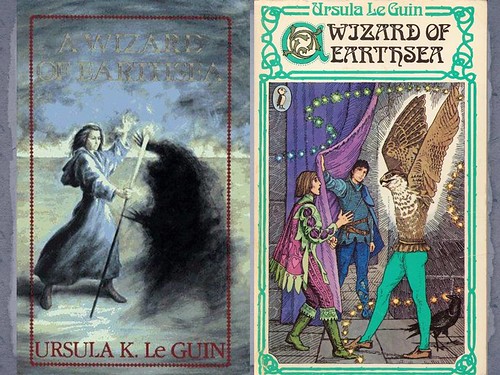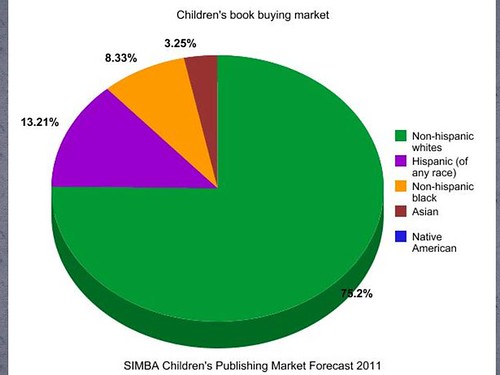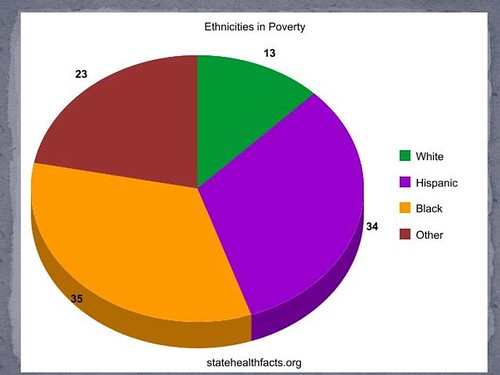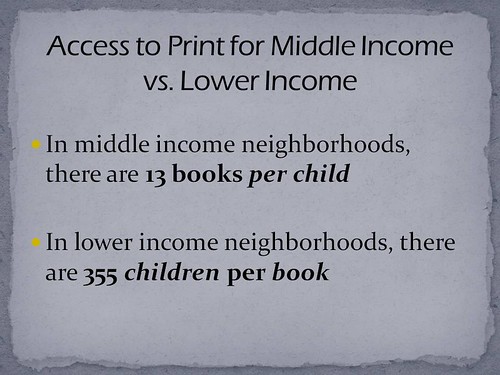Many authors have broken that mold & followed Ursula K. Le Guin’s admonition to write more of the “other.” But there’s still a strong British tradition—among the biggest touchstones for kids from the 70s and 80s era are arguably Susan Cooper, Roald Dahl, Diana Wynne Jones, etc.
All touchstones for a reason—they’re REALLY GOOD books. But told from a particular cultural perspective, and there is a danger to just one single story—and if you haven’t seen that TED talk by Chimamanda Adichie, I highly recommend you googling “the danger of a single story” and watching all twenty minutes of the talk, because she has a lot of really great things to say about how important it is for ALL children to see themselves mirrored in the books they read.
Yet despite our gains in diversity in fantasy and all of children’s books, we still have a long way to go. Just in the last few years, I’m sure you’ve heard of the problems with intentional or unintentional whitewashing that goes back as far as Ursula K. Le Guin’s A Wizard of Earthsea. You probably know that the main character of Earthsea, Ged, has copper skin, and that all the characters in the book except for the invaders are people of color. The myth was that “black books” don’t sell, so many versions of Earthsea didn’t feature people on the cover to avoid that “problem”—even to the point of featuring dragons. There are no dragons in Earthsea. EDIT: Wait, there were dragons in Earthsea? I honestly don’t remember them! But my point is that whether dragons are important or not, Ged is not white. Whoops!
And when people were featured on the cover, what does Ged look like?
It’s easy to say that’s all in the past, but as we all know, we’re still dealing with the problem now.
There’s the question of whether “black books” sell to a “mainstream” audience (I hate this term, because “mainstream” here implies “white,” without the nuance of all the other people in the audience—74% isn’t 100%!), not to mention it assumes that white people wouldn’t be interested in reading a story that features a black (or Asian, or Native American, etc etc) character.
In a world in which Will Smith and Denzel Washington are doing just fine, why is this a problem in our books??
Several months ago I attended a panel that featured several NY publishing house editors, a School Library Journal blogger, and an NYPL librarian (sorry, it’s been so long I can’t remember who was on the panel, but someone who was there might pipe up). One thing that was brought up by someone (sorry! can’t remember who!) on the panel is that part of the problem is that we’re defining books by “black book”/“white book,” rather than “awesome mystery,” “exciting historical adventure,” “thriller,” “space adventure.” That’s what we’re working on at Tu—exciting books for young readers that are all about the story first and foremost and just happen to feature a person of color as the main character. How silly is it to assume that the hero always has to be white?
A lot of my colleagues in editorial are looking for books featuring a wide variety of characters. It’s a change that we all need to implement as writers, readers, parents, teachers, librarians, booksellers, marketing, and anyone else involved in bringing books to young readers.
Let’s look at the readers themselves for a minute.
Note that this is from 2008 or 2009 estimates from the US Census Bureau & that we’ll have a more accurate view once the 2010 data is available. I’ve heard that soon, if not now, about 50% of kids in schools across the nation are people of color, including Latinos. Right now, if you add up those sides of the pie, even in 2008 people of color were 32% of the population overall.
You might want to run by those again. I think just seeing how the green part of the pie just grows… and grows… and grows…
Why is that?
Okay, then I just wanted to show you this last thing. NOW REMEMBER—not all people of color live in poverty, and not all people in poverty are people of color. But when thinking about how kids access books—who buys them, where kids find books to read, etc.—it’s important to remember that a large percentage of those in poverty are kids of color, and that affects how they’re able to access print materials.
Note that because of the demographic breakdown, a lot of the kids who only have 1 book to share with 354 other kids will be kids of color.
And you get a pretty good picture that the majority of the book-buying public being white has a lot to do with who’s in poverty as much as any other reason. Of course, correlation isn’t causation—I’m just saying there’s a link here for us to consider, and that there’s a lot of work to do in making sure that kids in poverty also see themselves mirrored in books. There’s a privilege situation that means that most of the demographic writing books aren’t necessarily the same demographic as the kids looking for books in our schools and libraries. (I first heard of this data when Andrea Davis Pinkney shared it at the A is for Anansi conference; later I found a study that confirmed the numbers, but I don’t have the link here on my home computer.)
We often talk in multicultural book circles about the idea of mirrors and windows—mirrors to see your own experience reflected back, windows to see into another world. Author Zetta Elliott recently added a dimension to that which I like, the idea of “sliding glass doors” to walk in and experience someone else’s world. That’s what reading is, isn’t it? That’s where true interculturalism begins.
In 2009 when I was starting Tu Publishing as a small press in Utah—before we were acquired by Lee & Low—I talked to a few neighborhood kids about their reading habits. This is by no means a scientific study, and I want to warn you that often, kids at this age don’t have the vocabulary to express their feelings about reading, so it might seem like I’m leading them, but the questions I’m asking in the video are questions that use information their parents supplied to me. Let’s watch them first, then I’ll discuss.
(Ignore the links to the Kickstarter campaign—that’s from way back when we were starting up.)
The last four kids were all siblings in a multiracial family. Note how the older sister had a lot more vocabulary to explain why she likes the books she likes! I’m sure that the boys and the youngest girl will eventually find the words to explain what they mean. But I want to talk about Austin in particular. He’s actually younger than his brother by two years—he was 8 and his brother was 10 at the time of filming. So his answers do reflect his developmental place in life—he just doesn’t have the vocabulary to express his frustration. In a family of readers, he hates to read, his mom says, not only because of his ADD but also because he can’t ever find any books that he feels he relates to. He would love to read a mystery, but when he picks up the mysteries his older brother is into, he flips through them and says in disgust, “Why can’t there be any black people who solve mysteries? Aren’t there any black people in this book at all??”
Anecdotally, that is one of the many factors that might affect why some kids of color don’t read as much genre fiction: not as many mirrors in as windows, which means it’s a bigger stretch for them to go out of their comfort zone every day. And they often do that so often, that in reading for pleasure, why would they want to yet again read about someone other than themselves?
Not every kid will have a need for mirrors. But shouldn’t we be providing them for the ones that do, and windows into their world for other kids?
Business-wise, it’s easier to sell windows than mirrors. Hence, when you look at the numbers of who buys books, of course the largest number of books currently sold will be to white people picking up books in which they see themselves mirrored, right? They’re the people who buy books by a large margin, both because whites are just a larger percentage of the population but also because a greater percentage of them are in a higher socioeconomic bracket. But then, we discount that low-income neighborhoods need public libraries and school libraries and all those other places where kids should have access to books and other reading materials, too. And we definitely discount the minorities who have money and are looking for great mirror books for their kids or themselves.
But hey, we’re publishing people. We can’t change the world, but we can do something. We can get involved in our communities and do what we can in our own spheres of influence. We can hope and work toward making sure that those opportunities are available through a lot of ways, like helping local libraries retain their funding, getting involved in mentoring, donating books, or donating money to book programs like RIF (which, if you noticed recently, lost all its federal funding due to severe budget cuts). There are so many opportunities to get involved like that.
But as that side of things improve, we also have to make sure that the actual books continue to grow toward reflecting the world that kids see in their daily lives, inasmuch as that is possible in a fantasy world, right?
As Andrea Davis Pinkney said at that same conference I mentioned above, “We’re doing okay, but we have a lot of work to do.”
Next time: Writing cross-culturally. What should writers take into consideration when thinking about writing from a perspective not their own? Should they even attempt writing cross-culturally/cross-racially?










Comments are closed